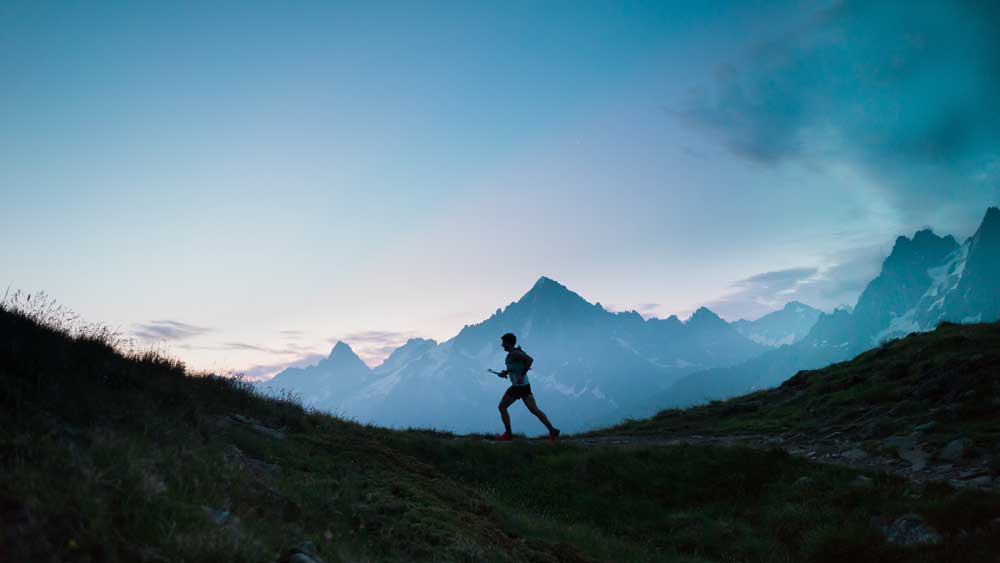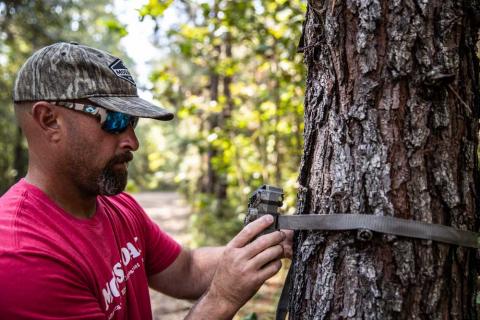Is it getting harder to drag yourself out of bed just to run on a treadmill? Maybe you are bored running the same route, trying to avoid the same dog and finishing at the same place every day? Many runners are leaving the treadmills and city streets behind and hitting the trails. These runners find the challenges of running the nation’s trail system uniquely rewarding. Let’s find out how to start trail running on a trail near you.

What Do I Need to Know?
Long-distance runners looking for something new to do, want to know “What is rucking?” or “What is trail running?” It seems that everyone has a different perception of trail running. Many runners are leery of trail running because they see pictures of trail runners struggling up Pikes Peak. That is an exciting and challenging trail to run, but those runners did not start with Pikes Peak.
For the record, trail running is hiking on the run. You can trail run on the hiking trails of many cities, state and national parks. Trail runners are not jogging down asphalt bike paths; they are navigating obstacles and difficult terrain over unimproved hiking trails.
The Mental Challenge
Many have found a walk through the local park can reset them mentally. Trail runners take that to another level. They leave the pressures of their urban life behind them and are surrounded by nature as they begin their run. As they make their way over a remote trail, they slowly become part of their surroundings. There is something about watching the trail come at you a few feet at a time, hurdling logs, dodging rocks and jumping a stream that is deeply satisfying.
The Physical Challenge
Hikers who know how to train for hiking are surprised how different trail running is from hiking. Even experienced hikers find trail running forces them to use muscles they have not used in years. Unlike running on asphalt, trail runners are running in the dirt, sand and mud. Almost all trails require you to lean into steep hills or navigate loose dirt and rock. It’s common to run through the shade of large trees and then into the sun of an open trail. You will find your balance and endurance challenged like never before.

How to Get Started
Now that you know what you are getting into, let’s look at what it takes to get started. First of all, you will need a good pair of trail running shoes. They are more rugged and built for stability and traction. They will also protect your feet from sharp rocks and uneven terrain.
A good smartphone is a must. At the entrance to many trailheads, there is a sign with a map of the trail system. It’s a good idea to take a picture of the trail system, so you don’t get lost. In the unlikely event you are hurt or injured, you can call for help.
Not all parks and trails have good cell coverage, so you may not be able to use your phone if you happen to get lost. A printed map can help you find your way out and is easy to carry with you on the run.
A hydration pack for long trail run is a must. You may not need to wear one for runs of 30 minutes or less. For short runs, you can keep water and snacks in the truck. For longer runs, wear a hydration pack to stay hydrated and carry snacks to keep energy levels up.
Weather can be unpredictable, especially across mountain ranges. A lightweight rain jacket stuffed into your hydration pack will be there for those unexpected showers or sudden drops in temperature.
A GPS watch will let you keep track of stats like speed, distance and calories. You will also have the altimeter, route planning and other features at your disposal. A GPS watch is more than a nice-to-have; as your runs increase in length, it becomes a must-have.
Preparing for Your First Run
Now that you know what trail running is all about and what gear you need for your first run, you need to find a place to go. The American Trail Running Association has a find a trail tool to help you find the right trail. You can also visit city, county, state and U.S. Forest Service websites for trail information.
When researching trails for your first run, don’t start with a Pikes Peak type trail. Choose a short trail with little elevation. You will be surprised by how challenging even beginner trails can be. You may run a 5K in 45 minutes, but that same distance on a trail will take twice as long. As your trail-running abilities improve, you can attempt more challenging trails. It’s also easier to get a friend to go with you on easier trails.
After you have selected a trail to run, study the map before you go. A mental image of the trail you run will help you make the run faster. If possible, load the route onto your GPS watch or smartphone for turn-by-turn instructions. Try to recruit a fellow runner to go with you, especially if they have run the trail before. It’s more fun to run with friends, and you never know when you will need someone to help you limp back.
Enjoy the View
In the beginning, you may be uncomfortable running trails by yourself. In this case, there are trail running clubs that will help you connect with other runners. You may improve enough to enter a race, but until then enjoy the view and being out in nature. Because, once the trail running bug bites you, it is hard to go back to the treadmill.






























